1. Overview
Taras Hryhorovych Shevchenko (Тарас Григорович ШевченкоUkrainian; March 9, 1814 - March 10, 1861) was a pivotal Ukrainian poet, writer, artist, and political figure. His literary legacy, particularly the poetry collection Kobzar, is regarded as the cornerstone of modern Ukrainian literature and, to a significant extent, the modern Ukrainian language. Born into serfdom in the Russian Empire, Shevchenko's life and work became a powerful testament to the struggles against social injustice and autocracy. He was a fellow of the Imperial Academy of Arts and an influential member of the clandestine Brotherhood of Saints Cyril and Methodius, an organization dedicated to the political liberalization of the Empire and the transformation of Slavic nations into a democratic federation. This article explores his remarkable journey from a serf to a revered national symbol, emphasizing his unwavering advocacy for social justice, human rights, and Ukrainian national liberation.
2. Life
Taras Hryhorovych Shevchenko's life was marked by profound hardship and extraordinary artistic and intellectual achievements. His personal experiences as a serf deeply informed his powerful critiques of societal oppression and his enduring commitment to freedom.
2.1. Childhood and Early Life
Taras Shevchenko was born on March 9, 1814, in the village of Moryntsi, Kiev Governorate, Russian Empire, approximately 20 years after the territory where he was born was annexed by Imperial Russia following the partitions of Poland. He was the third child of his parents, Kateryna (née Boiko) and Hryhoriy Ivanovych Shevchenko, who were serf peasants working on the land owned by Vasily Engelhardt. The family moved to Kyrylivka (modern Shevchenkove) in 1816, a village where his father and grandfather had been born and which was also owned by Engelhardt.
In the autumn of 1822, Taras began studying grammar with Sovhyr, a precentor at the local church, where he also became familiar with the works of Hryhoriy Skovoroda. His early artistic talent emerged during this period, as he drew horses and soldiers between 1822 and 1828. Life took a harsh turn when his mother, Kateryna, died on September 1, 1823. His widowed father, Hryhoriy, then remarried Oksana Tereshchenko, a widow with three children from Moryntsi. She treated Taras and his younger siblings with great cruelty. In 1824, Taras traveled with his father as a Chumak (traveling merchant) to various towns, including Zvenyhorodka, Uman, and Yelizavetgrad (modern Kropyvnytskyi).
Tragedy struck again when his father died from a chill on April 2, 1825, leaving Taras an orphan at the age of 11. His stepmother soon returned to Moryntsi with her own children. For a period, Taras lived with his grandfather and paternal uncle, Pavlo, and was forced to work as a swineherd and a groom's assistant. At 12, he left home to work as a student assistant and servant for Bohorsky, a deacon from Kyiv who replaced Sovhyr as the village teacher. Bohorsky was even more violent than his predecessor, making Taras perform duties such as fetching water, serving the priest, reading psalms over the dead, and continuing his studies, all while enduring severe mistreatment.
Frustrated by Bohorsky's cruelty, Shevchenko fled in February 1827, seeking master painters in surrounding villages. He briefly worked for Deacon Yefrem in Lysianka before moving through other areas in the southern part of Kiev Governorate, including Stebliv and Tarasivka. In 1827, he became a community shepherd near his village and reconnected with his childhood friend, Oksana Kovalenko, whom he later immortalized in his poem "Mariana the Nun." During this time, his older brother, Mykola, also trained him to be a wheelwright. He also lived and worked for the Kyrylivka priest, Hryhoriy Koshytsia, who treated him well and tasked him with driving his son to school and transporting fruit to markets in Burty and Shpola.
2.2. Life as a Serf and Beginning of Artistic Activities
In 1828, Vasily Engelhardt died, and his son, Pavlo Engelhardt, became the new landlord of Kyrylivka. Taras Shevchenko, then 14, was taken into Pavlo Engelhardt's service as a kitchen servant and kozachok (court servant) at the Vilshana estates. This period exposed him to the luxurious lifestyle of the Russian nobility.
In 1829, Shevchenko traveled with Engelhardt's retinue to Warsaw, where his regiment was based. By the end of 1829, they had reached Vilno (modern Vilnius). On December 18, 1829, Engelhardt discovered Shevchenko secretly painting a portrait of the Cossack general Matvei Platov at night. Engelhardt punished him by boxing his ears and ordering him to be whipped. In Warsaw, Engelhardt arranged for Shevchenko to be apprenticed to a painter-decorator, who recognized his talent and recommended lessons from the Polish artist Franciszek Ksawery Lampi.
The November Uprising in 1830 forced Engelhardt and his regiment to leave Warsaw, and Shevchenko was expelled from the city and escorted out of Polish territory under armed guard before making his way to Saint Petersburg. His artistic training was delayed for a year. He then spent four years studying with the painter Vasiliy Shiriayev, who proved to be even more cruel than his previous master. Despite this, Shevchenko continued to draw at night, often visiting the city's Summer Garden to sketch statues. It was during this period in Saint Petersburg that he secretly began writing poetry.
During his pre-academical period, Shevchenko painted works such as Apollo Belvedere, Fraklete, and Heraclitus. He also participated in the painting of the Bolshoi Theatre as an apprentice artist. In 1830, he created the composition Alexander of Macedon shows trust towards his doctor Philip for a contest held by the Imperial Academy of Arts.
2.3. Liberation from Serfdom and Academy Years
While copying statues in Saint Petersburg's Summer Gardens, Shevchenko met Ivan Soshenko, a young Ukrainian artist and student at the Imperial Academy of Arts. Soshenko recognized Shevchenko's talent and provided him with drawing and watercolor painting lessons on weekends and during his free time. Shevchenko's progress as a portraitist was so significant that Engelhardt commissioned him to portray several of his mistresses.
Soshenko introduced Shevchenko to Saint Petersburg's art galleries, including the Hermitage Museum. He also connected him with other Ukrainian compatriots, such as the writer Yevhen Hrebinka and the art historian Vasyl Hryhorovych, as well as the Russian painter Alexey Venetsianov. Through these connections, around June 1832, Shevchenko was introduced to Karl Briullov, the most fashionable painter of the day. Briullov was impressed by Shevchenko's work and expressed a willingness to take him as a student. However, as a serf, Shevchenko was ineligible for formal study at the Academy, prompting Briullov to request his freedom from Engelhardt, a request initially met with refusal.
Engelhardt eventually agreed to release Shevchenko for a fee of 2.50 K RUB. To raise this substantial sum, Briullov painted a portrait of the Russian poet Vasily Zhukovsky, which was raffled off as a lottery prize for the imperial family, with the winning ticket drawn by the Tsarina herself. On May 5, 1838, Engelhardt signed the documents that officially released Shevchenko from serfdom.
After gaining his freedom, Shevchenko enrolled in the Imperial Academy of Arts, with Briullov as his mentor. He immersed himself in academic life, spending most of his time at the academy and in Briullov's studio. Their collaboration extended beyond formal training; they attended literary and musical evenings and visited other prominent writers and artists, enriching Shevchenko's social life and stimulating his creativity. His friends during this period included Yakov Kuharenko, a writer and officer of the Black Sea Cossack Host, and the artist Karl Joachim.
Shevchenko's artistic progress was rapid. From June to November 1838, his examination marks improved, allowing him to join a compositional drawings class. His early drawing, Козацький бенкет (Шевченко)Cossack BanquetUkrainian, was completed in December of that year. The following month, the Imperial Society for the Encouragement of the Arts recognized his talent and agreed to pay him a monthly maintenance fee of 30 RUB. In April 1839, the Council of the Academy awarded Shevchenko a silver medal for his work. He began to master oil painting, with Натурщик у позі св. СебастіянаThe Model in the Pose of St. SebastianUkrainian among his earliest attempts. In 1839, he received another silver medal for his oil painting The Beggar Boy Giving Bread to a Dog.
In September 1841, he earned his third silver medal from the Academy of Arts for his painting Циганка-ворожка (Шевченко)The Gypsy Fortune TellerUkrainian. However, continuous absenteeism from classes led the Society for the Encouragement of Artists to exclude him from its free boarders the following May. To earn income, he produced book illustrations for works such as Nikolai Nadezhdin's story The Power of Will, Oleksandr Bashutskyi's Ours, written off from nature by the Russians, an edition of Wolfgang Franz von Kobell's Galvanography (1843), and Nikolai Polevoy's Russian Generals (1845).
At the end of 1839, Shevchenko met the sculptor and art teacher Ivan Martos, who took great interest in his poems and offered to publish them. Shevchenko initially hesitated, but Yevhen Hrebinka actively facilitated the publication of his first collection, Kobzar, in 1840, submitting the manuscript to the Saint Petersburg censorship committee. The book quickly sold out. While it did not explicitly call for revolutionary action, it powerfully articulated a protest against social injustice and a yearning for freedom. In March 1840, Hrebinka also submitted Shevchenko's "Prychynna" and the poems "Вітре буйний, вітре буйний!The wind is raging, the wind is raging!Ukrainian" and "Тече вода в синє мореWater flows into the blue seaUkrainian" for inclusion in the almanac Lastivka. In 1841, Shevchenko self-published his epic poem Haidamaky, which was met with sharp criticism from literary critic Vissarion Belinsky for its "inclination to romantic pompous ingenuity." Other poems from this period include "Мар'яна-черницяMaryana the NunUkrainian", "Утоплена (балада)DrownedUkrainian", and "Сліпа (поема Шевченка)Blind ManUkrainian". His play Blind Beauty, written around 1841, has not survived. However, he released parts of the tragedy Mykyta HaidaiMykyta HaidaiUkrainian in 1842 and completed the drama Nazar Stodolia in 1843. In the autumn of 1842, Shevchenko planned a sea trip to Sweden and Denmark, but due to illness, he returned home after reaching Revel (modern Tallinn).
2.4. Visits to Ukraine and Political Engagement
While residing in Saint Petersburg, Shevchenko made three significant trips to Ukraine: in 1843, 1845, and 1846. These journeys profoundly impacted the poet-painter, as he witnessed firsthand the dire and harsh conditions faced by the Ukrainian people under serfdom. He visited his siblings and other relatives who remained enserfed, experiencing their suffering.
During these visits, he connected with prominent Ukrainian writers and intellectuals such as Yevhen Hrebinka, Panteleimon Kulish, and Mykhaylo Maksymovych. He also formed a close friendship with the princely Repnin family, particularly Varvara Repnina. In May 1843, during his first trip, he sought to meet as many intellectuals, poets, and artists as possible, including future Brotherhood of Saints Cyril and Methodius member Vasyl Bilozersky. While in Kyiv, he sketched historical sights and landscapes. After a month, he traveled to Yahotyn, further cultivating his friendships.
In October 1843, deeply moved by the conditions he observed, Shevchenko wrote his poem "Розрита могилаThe Dug GraveUkrainian", after visiting recent archaeological excavations of burial mounds that many Ukrainians viewed as symbolic of the heroic Cossack past.
Distressed by the state of Ukrainian regions within the Russian Empire, Shevchenko decided in 1844 to compile an album of etchings depicting his homeland's historical ruins and cultural monuments, which he titled Picturesque Ukraine. He intended to use the proceeds from this project to purchase his family's freedom. The Society for the Encouragement of Artists provided him with 300 RUB to aid its production. However, due to poor planning and a lack of business acumen, only the first six etchings were printed, and insufficient funds were generated to realize his dream of freeing his siblings. An album of watercolors from historical places and pencil drawings was compiled in 1845.
Shevchenko's political engagement intensified during these visits. In 1845, he met historian Mykola Kostomarov and other members of the Brotherhood of Saints Cyril and Methodius, a clandestine society also known as the Ukrainian-Slavic society. This organization was dedicated to the political liberalization of the Empire and its transformation into a federation of Slavic nations based on democratic principles. Shevchenko's poem "Сон (поема)DreamUkrainian", written in 1844, played a significant role in his subsequent arrest. This poem vividly depicted the social and national oppression endured by Ukrainians at the hands of the Russian upper classes and the Tsar. He returned to Saint Petersburg from Ukraine in February 1845.
2.5. Arrest and Exile
Shevchenko was arrested along with other members of the Brotherhood of Saints Cyril and Methodius on April 5, 1847. Copies of his poem "Dream" were confiscated from the society's members and became a central piece of evidence in the ensuing scandal. Tsar Nicholas I personally read Shevchenko's poem. Vissarion Belinsky, in his memoirs, recounted that Nicholas I, who understood Ukrainian well, initially laughed while reading the section about himself. However, his mood quickly turned to bitter hatred upon reading the part mocking his wife, Tsarina Alexandra's frumpy appearance and facial tics, which she had developed from fear after the Decembrist uprising. The Tsar indignantly declared, "I suppose he had reasons not to be on terms with me, but what has she done to deserve this?"
In the official report submitted by Alexey Fyodorovich Orlov, Shevchenko was accused of composing poetry in "Little-Russian language" (an archaic Russian name for the Ukrainian language) of outrageous content, despite having been redeemed from serfdom. Orlov's report further listed Shevchenko's alleged crimes as advocating for and inspiring Ukrainian nationalism, lamenting the enslavement and misfortune of Ukraine, glorifying the Cossack Hetmanate and Cossack liberties, and "with incredible audacity poured slander and bile on persons of Imperial House." The report specifically highlighted that Shevchenko was a supporter of Ukrainian independence.
Under investigation, Shevchenko was imprisoned in the casemates of the 3rd Department of Imperial Chancellery on Panteleimonovskaya Street (now Pestelia Street, 9) in Saint Petersburg. After being convicted, he was exiled as a private to the Russian military garrison in Orenburg, specifically at Orsk, near the Ural Mountains. Tsar Nicholas I personally confirmed his sentence, adding a severe restriction: "Under the strictest surveillance, without the right to write or paint." He was then subjected to a forced march from Saint Petersburg to Orenburg and Orsk.

In 1848, a year after his exile began, Shevchenko was assigned to the first Russian naval expedition of the Aral Sea on the ship "Konstantin," commanded by Lieutenant Butakov. Although officially a common private, Shevchenko was treated as an equal by other expedition members. His primary task was to sketch various landscapes along the Aral Sea coast, including the local nomadic Qazaq. He produced many unique works of art depicting the Aral Sea's nature and the people of Kazakhstan, even as the Russian conquest of Central Asia had begun in the mid-19th century. After an 18-month voyage (1848-1849), Shevchenko returned to Orenburg with his album of drawings and paintings. Most of these drawings were intended for a detailed account of the expedition.
He was then sent to one of the Empire's harshest penal settlements, the remote Novopetrovsk fortress on the Mangyshlak Peninsula, where he endured seven terrible years of physical and mental torment. In 1851, upon the suggestion of fellow serviceman Bronisław Zaleski, lieutenant colonel Mayevsky assigned him to the Mangyshlak (Karatau) geological expedition.
2.6. Later Years and Return
In 1857, Shevchenko finally received amnesty from the new emperor, Alexander II of Russia, and was released from exile. However, he was not permitted to return to Saint Petersburg and was instead forced to reside in Nizhny Novgorod.
He was eventually allowed to return to Saint Petersburg. In the winter of 1858, he witnessed the acclaimed African-American Shakespearean actor Ira Aldridge perform with his troupe. Despite language barriers, Shevchenko and Aldridge formed a deep friendship through discussions of art and music, bonding over their shared experiences of oppression. Shevchenko drew Aldridge's portrait, and Aldridge was later gifted a portrait of Shevchenko by Mikhail Mikeshin.
In May 1859, Shevchenko was granted permission to return to Ukraine. He intended to purchase a plot of land near the village of Pekari and had plans to marry. However, in July, he was arrested again on a charge of blasphemy. He was subsequently released but ordered to return to Saint Petersburg, preventing him from settling in his homeland.
2.7. Death and Reburial
Taras Shevchenko spent the last years of his life tirelessly creating new poetry, paintings, and engravings, while also meticulously editing his earlier works. He also personally financed and oversaw the publication of a grammar book for Ukrainian children, titled Букварь южнорусскійBukvar YuzhnorusskyiUkrainian (South-Russian Primer). However, the difficult years of exile and forced labor took a severe toll on his health, leading to chronic illnesses.
Shevchenko died in Saint Petersburg on March 10, 1861, just one day after his 47th birthday. He was initially buried at the Smolensk Cemetery in Saint Petersburg. His funeral in Saint Petersburg was attended by literary giants such as Dostoevsky, Turgenev, Saltykov-Shchedrin, and Leskov.

Despite his initial burial, Shevchenko's deepest wish, expressed in his influential poem "Testament" ("Zapovit"), was to be buried in Ukraine. His friends honored this wish, arranging for the transfer of his remains by train to Moscow and then by horse-drawn wagon to his beloved homeland. Shevchenko was re-buried on May 8, 1861, on Chernecha hora (Monk's Hill), now known as Taras Hill, near the Dnipro River in Kaniv. A tall mound was erected over his grave, which is now a central memorial part of the Kaniv Museum-Preserve. Poignantly, the poet, who had fought tirelessly against serfdom, died just seven days before the 1861 emancipation of serfs was officially announced in Russia.
3. Works
Shevchenko's creative output spanned various mediums, including poetry, prose, and visual arts, all of which contributed significantly to the development of Ukrainian national identity and culture.
3.1. Literary Works
Shevchenko's literary works are widely regarded as the foundation of modern Ukrainian literature and language. He wrote 237 poems, though only 28 were published in the Russian Empire and six in the Austrian Empire during his lifetime. His prose, including nine novellas, a diary, and his autobiography, was written in Russian.
His first collection of poetry, Kobzar, published in 1840, was a groundbreaking work that expressed a powerful protest against social injustice and a longing for freedom. Though it did not explicitly call for revolution, its themes resonated deeply with the oppressed. In 1841, he self-published his epic poem Haidamaky, which romanticized the 1768 peasant uprising against Polish rule, receiving both acclaim and criticism, notably from Vissarion Belinsky. Other significant poems include "Мар'яна-черницяMaryana the NunUkrainian", "Утоплена (балада)DrownedUkrainian", and "Сліпа (поема Шевченка)Blind ManUkrainian".
Shevchenko also ventured into playwriting. His play Blind Beauty, written around 1841, has not survived. However, he released parts of the tragedy Mykyta HaidaiMykyta HaidaiUkrainian in 1842 and completed the drama Nazar Stodolia in 1843.
3.1.1. Example of Poetry: Testament (Zapovit)
Shevchenko's 1845 poem Testament (ЗаповітZapovitUkrainian) is one of his most influential and beloved works, embodying his fervent desire for a free Ukraine. It has been translated into over 150 languages and set to music in the 1870s by H. Hladky. The poem continues to resonate deeply within Ukrainian culture and serves as a powerful symbol of national aspiration and resistance, especially during times of struggle, such as the Russian invasion of Ukraine.
The poem's raw emotion and call for liberation reflect his revolutionary spirit and his vision for an independent, democratic Ukraine. Its widespread translation attests to its universal themes of freedom, justice, and national identity.
| Original Ukrainian Text (Zapovit) | English Translation (by Vera Rich, London, 1961) | English Translation (by John Weir, Toronto, 1961) |
|---|---|---|
3.2. Artistic Works
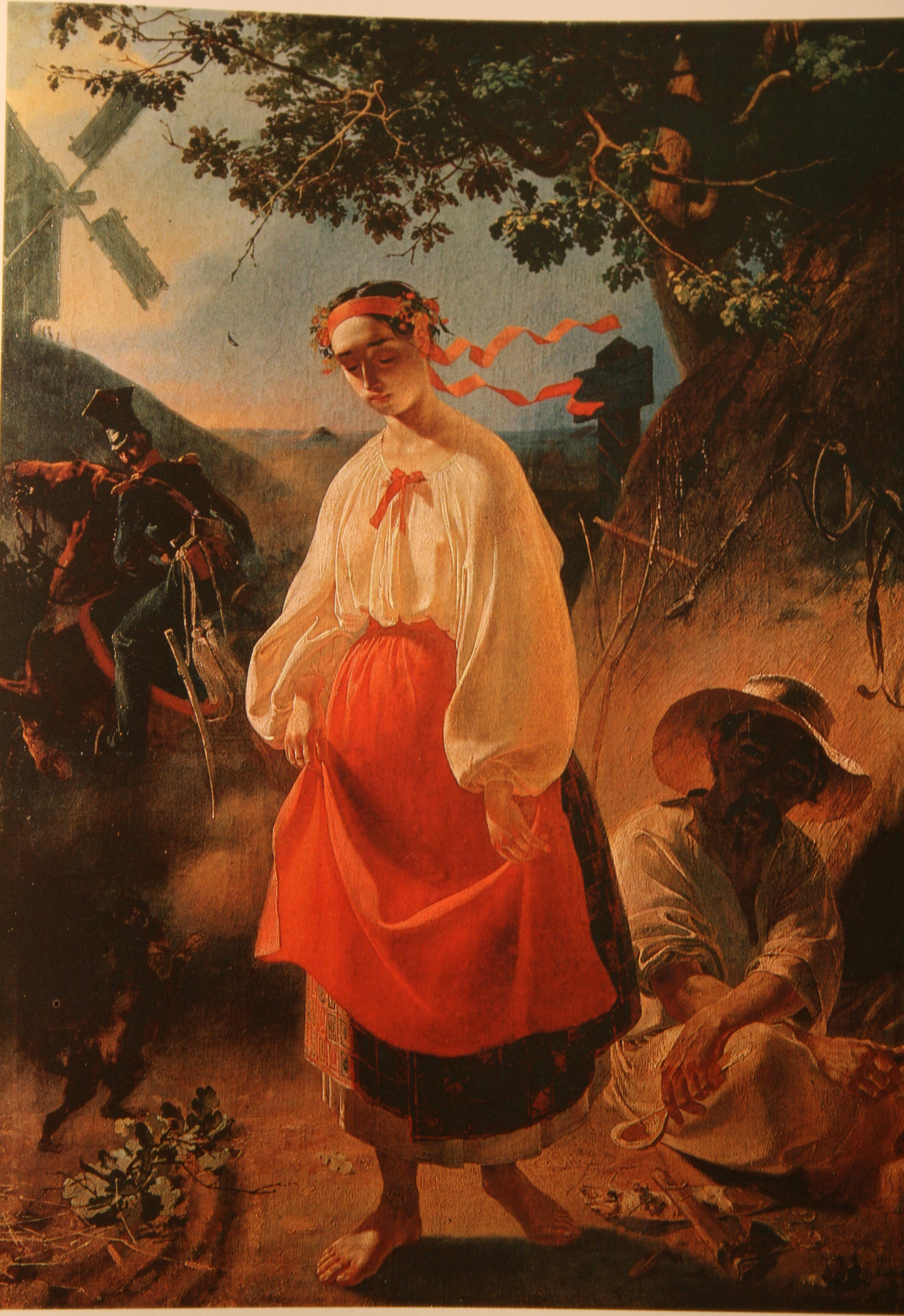
Shevchenko was also a prolific and talented visual artist. Of his known paintings and drawings, 835 works have survived in their original form or as prints or copies made during his lifetime, while an estimated 270 other works are lost. His finished paintings and engravings from 1830 to 1861 primarily depict regions in Ukraine, Russia, and Kazakhstan.
Shevchenko's artistic output included portraits, compositions on mythological, historical, and everyday household themes, architectural drawings, and landscapes. He employed a variety of techniques, including oil painting on canvas, watercolor, sepia, India ink, and pencil, as well as etchings on separate sheets of white or colored paper in various sizes. Many sketches and studies also exist, which are invaluable for understanding his artistic style and methods. Few of his works are signed, and even fewer are dated.
Shevchenko is recognized as a pioneer in the art of etching within the Russian Empire. In 1860, he was awarded the title of Academician by the Imperial Academy of Arts specifically for his significant achievements in etching. His visual art, like his poetry, reflected his deep connection to Ukraine, capturing its landscapes, historical sites, and the lives of its people, including the struggles faced by serfs. He also experimented with photography.
Shevchenko produced a wide array of notable artistic works. Among them is ''
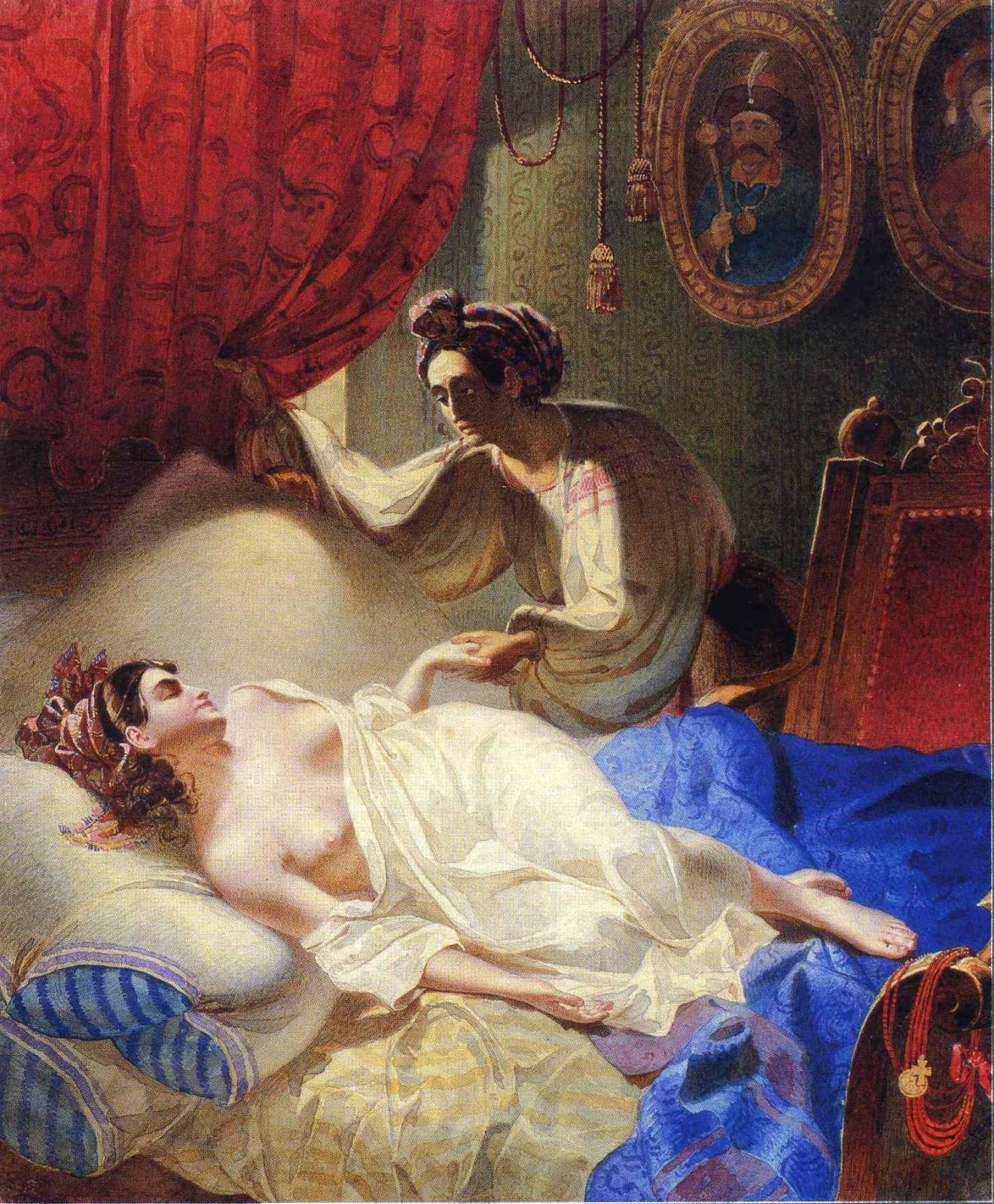
''Dream'' (1840), an illustration for ''Poltava''. In 1841, he received a silver medal from the Imperial Academy of Arts for his painting ''
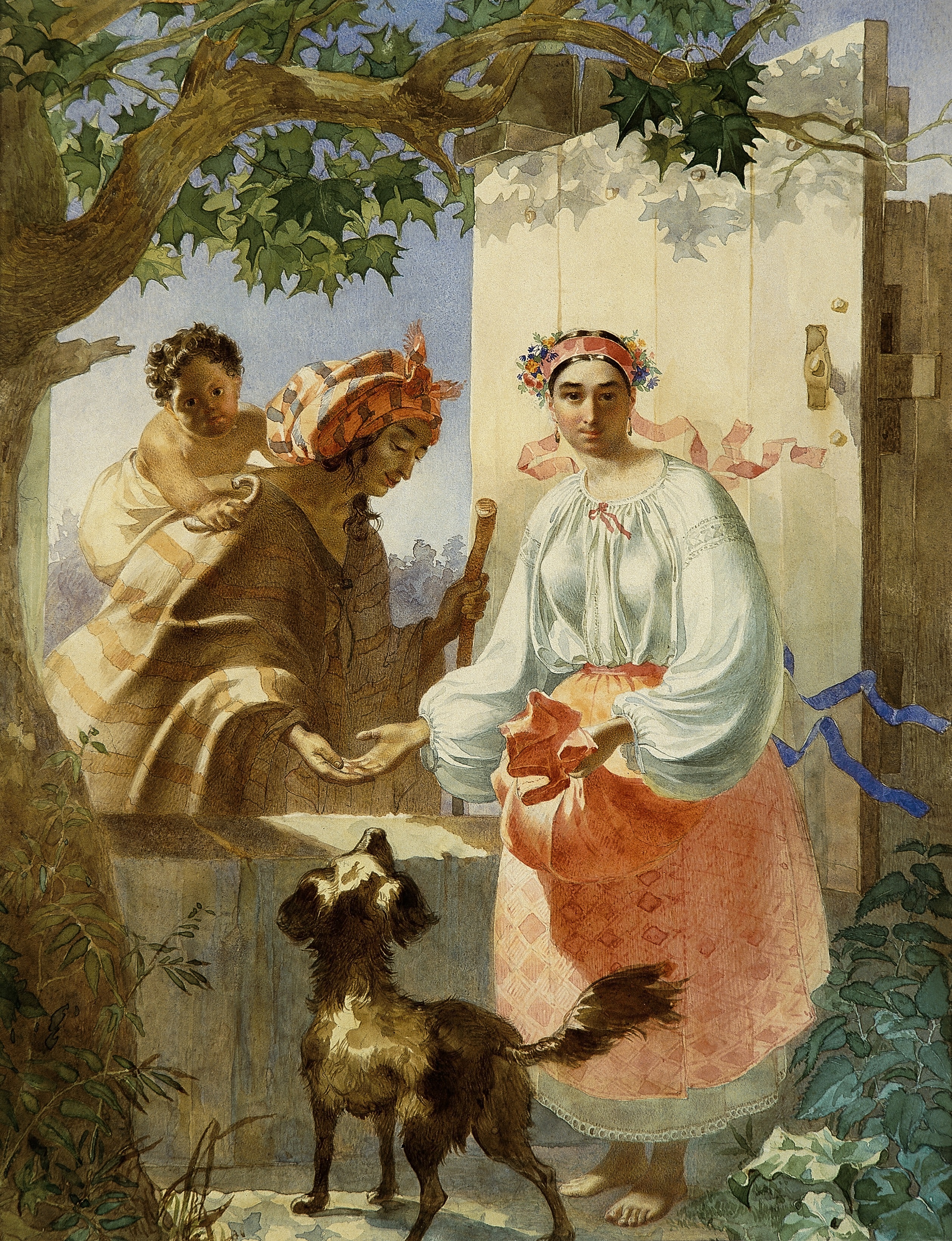
Gypsy Fortune Teller}}''.
His illustrative works also include an illustration of King Lear (1843), produced in Galvanography (image:
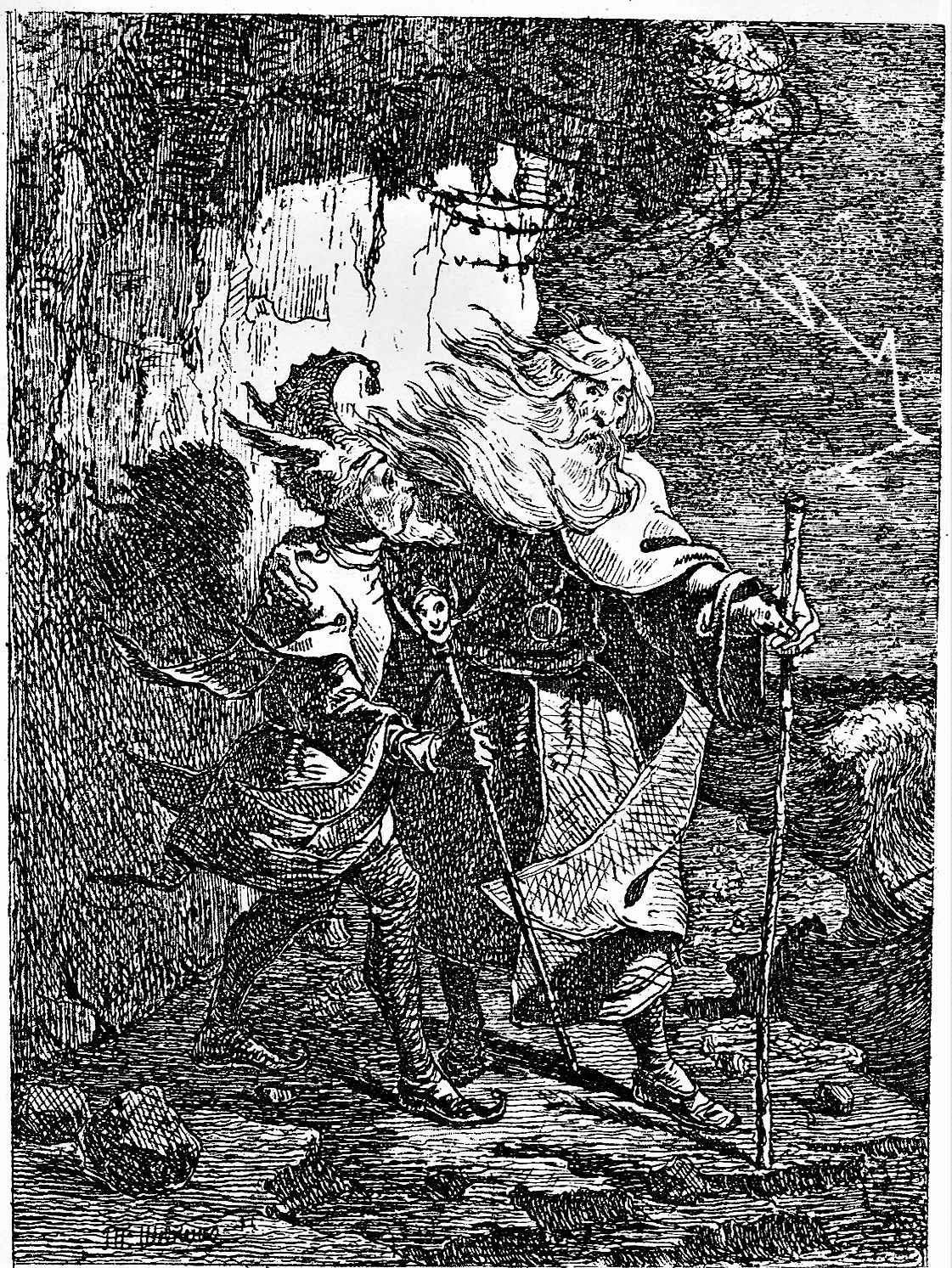
). Another significant etching is

In Kyiv}} (1844), which was one of the six etchings included in Picturesque Ukraine.
Shevchenko also captured the architectural heritage of Ukraine. His works include the
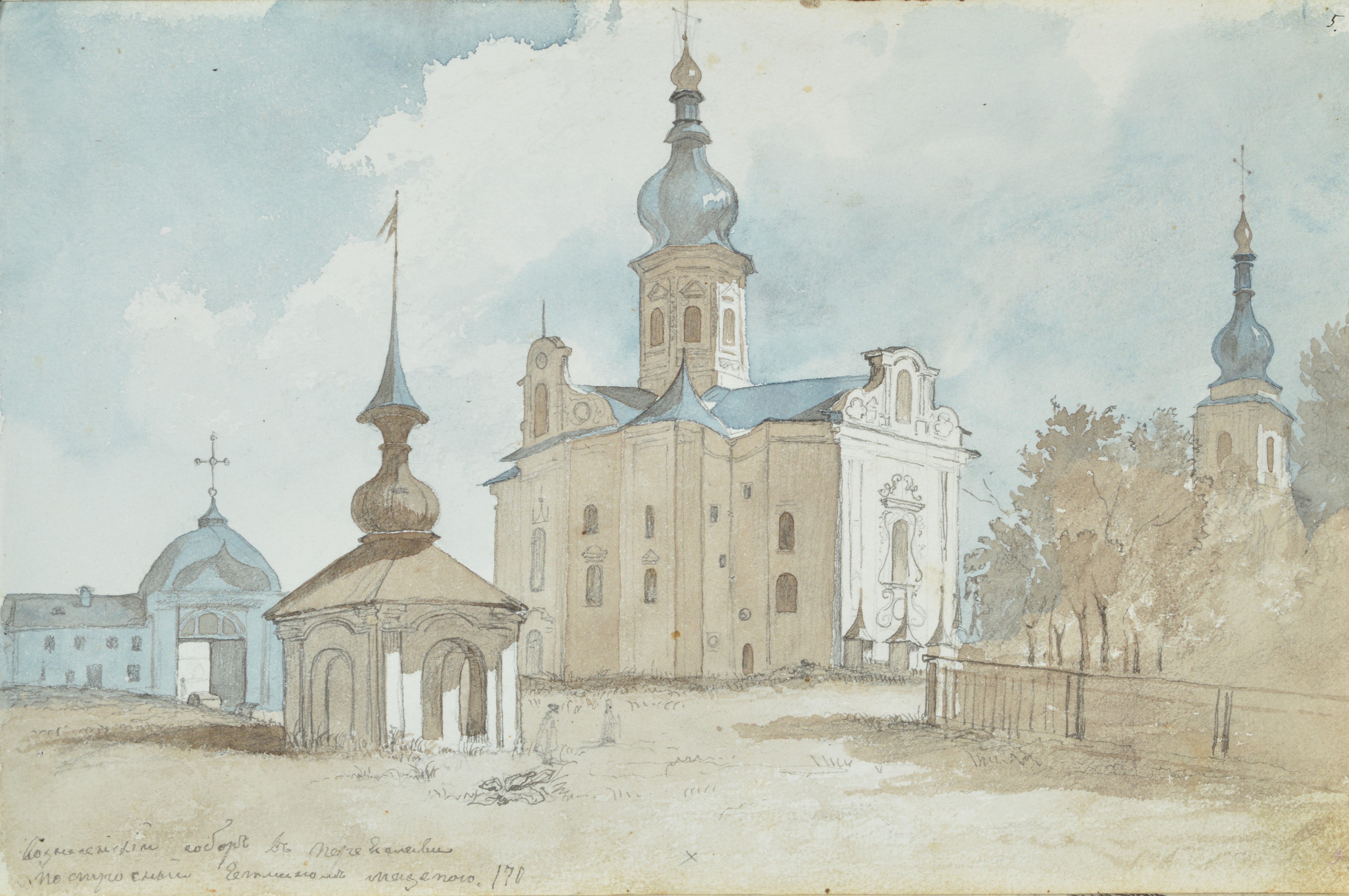
Ascension Cathedral in Pereiaslav-Khmelnytskyi (1845), originally built in 1700 by Hetman Ivan Mazepa. Another is the
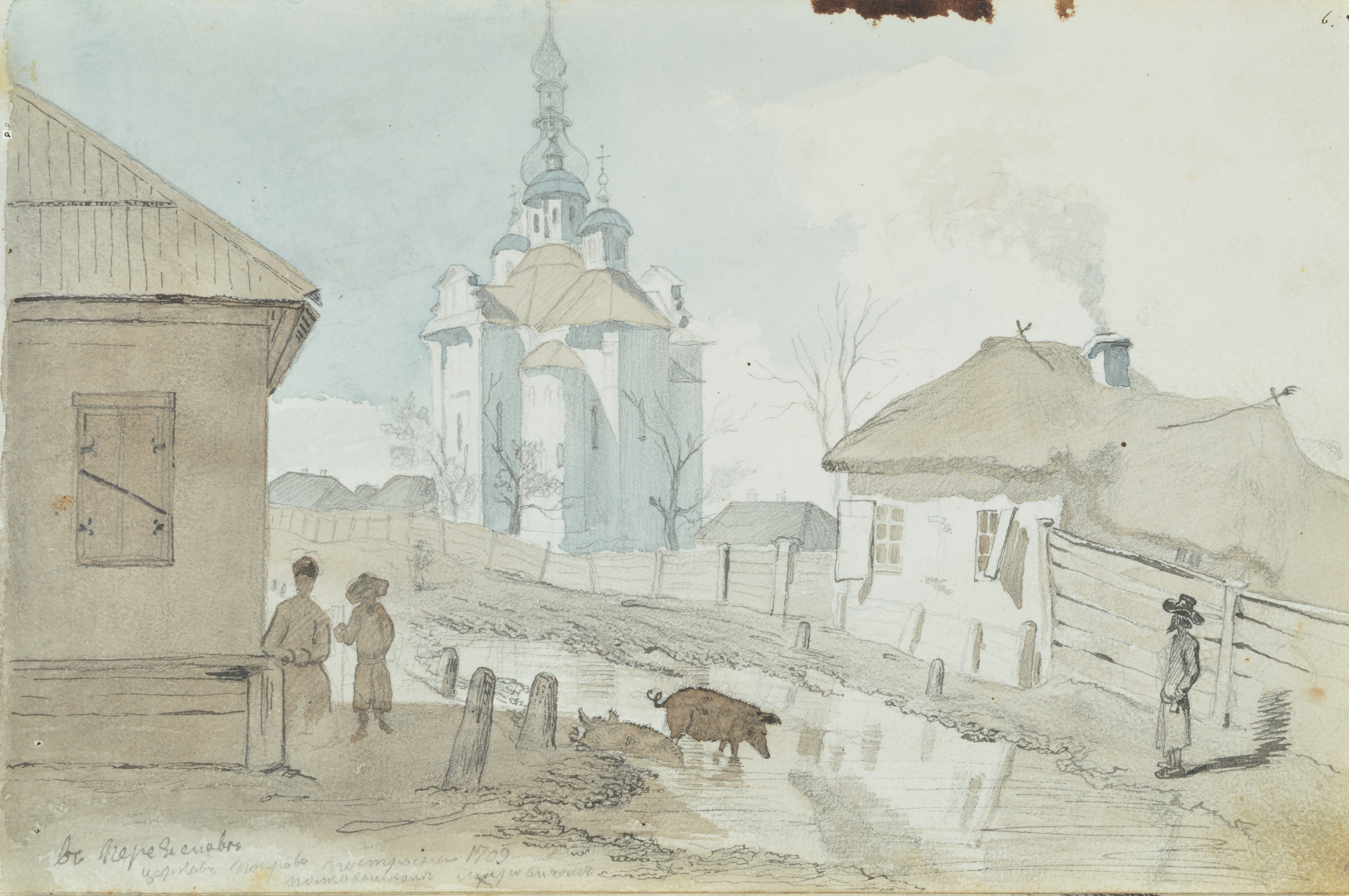
Intercession Church of the Mother of God in Pereiaslav-Khmelnytskyi (1845).
Further depicting the Ukrainian landscape and heritage, Shevchenko painted
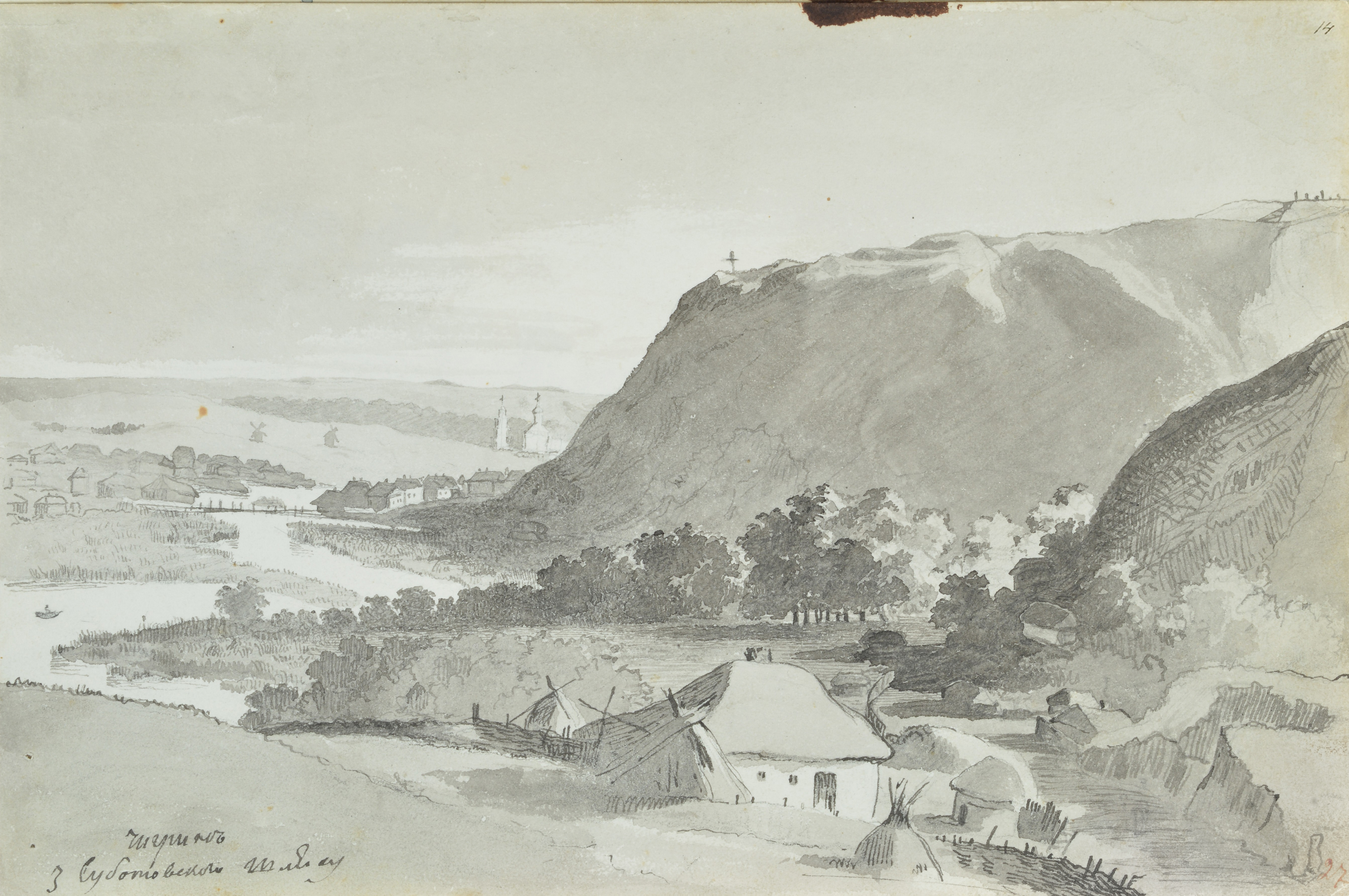
Road from Subotiv to Chyhyryn (1845) and the
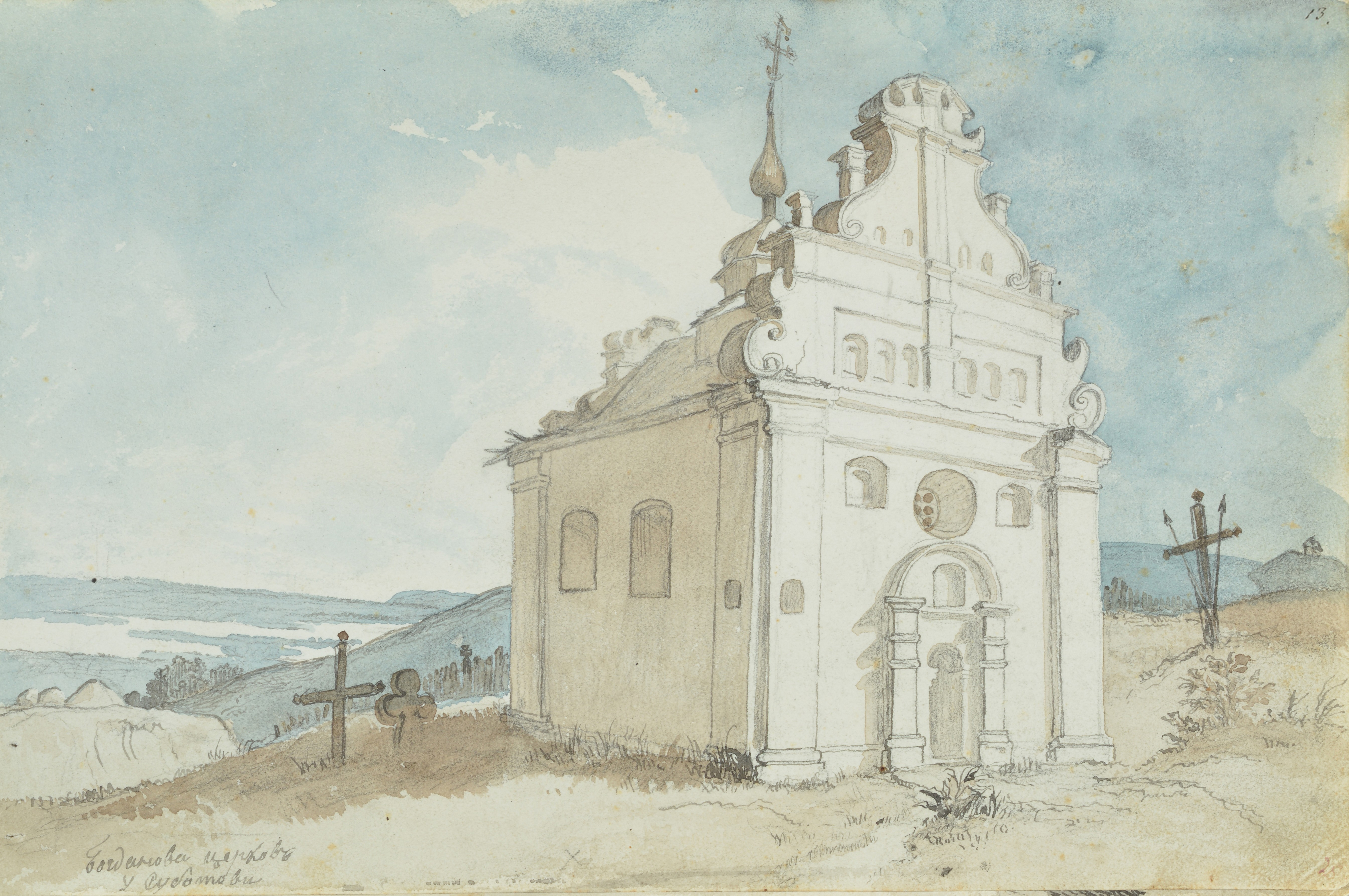
Bohdan Khmelnytsky Church in Subotiv (1845).
3.3. Philosophical and Political Views
Shevchenko is widely regarded as the founder of the revolutionary democratic movement in Ukrainian social thought and a proponent of utopian socialism. His political, aesthetic, and philosophical worldview was profoundly shaped by the ideas of Russian revolutionary democrats such as Alexander Herzen, Vissarion Belinsky, Nikolay Dobrolyubov, and Nikolai Chernyshevsky. His views reflected the interests of the Ukrainian peasantry during the mid-19th century, a period of crisis for the feudal-serf system in Imperial Russia.
He was a relentless critic of serfdom and autocracy, tirelessly exposing the oppression perpetrated by Russian landowners and the Tsar. Shevchenko also advocated for the unification of Slavic peoples on a democratic basis, sharing pan-Slavist views and maintaining contacts with the Russian intelligentsia. While he praised the 17th-century Ukrainian Cossack leader Bohdan Khmelnitsky as "the glorious of the glorious," he simultaneously criticized him for facilitating the liquidation of Ukrainian autonomy by Moscow.
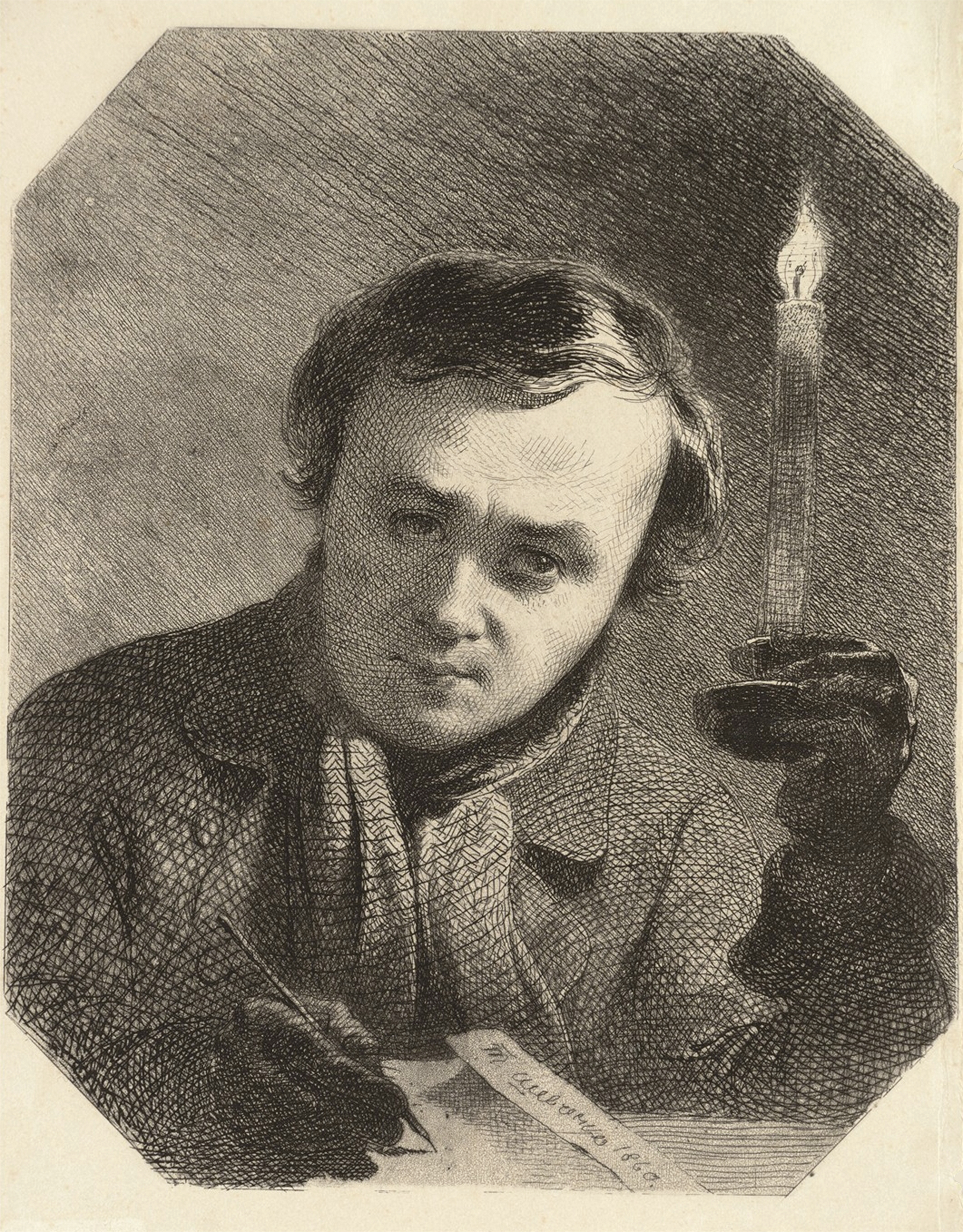
Shevchenko was significantly influenced by ideas from the Polish revolutionary movement, particularly the works of authors like Adam Mickiewicz. Although critical of the historical Polish attitude towards Ukrainians in his earlier poems, he later called for solidarity with Poles in their shared struggle against the Tsarist regime, demonstrating a maturing political perspective aimed at broader anti-imperial alliances.
As a serf peasant who was eventually ransomed, Shevchenko was, in the words of Russian critic Nikolai Dobrolyubov, "a poet of the people... He came out of the people, lived with the people, and not only by thought, but by the circumstances of life, was closely and bloodily connected with the people." Shevchenko was an active participant in the secret political organization, the Brotherhood of Saints Cyril and Methodius, heading its revolutionary core. He was also associated with the Petrashevists (the Petrashevsky Circle), a group of progressive intellectuals and radical utopian socialists, who hoped to leverage his revolutionary activities in Ukraine for a peasant uprising. After his exile, Shevchenko became closely associated with the literary, social, and political magazine Sovremennik and its editors, Nikolai Chernyshevsky and Nikolai Dobrolyubov.
Shevchenko did not view the existing social system as immutable. He was convinced that the serf system would eventually be destroyed due to technological advancements like the steam engine, which he believed would "devour the landlord-inquisitors." He emphasized the crucial role of the masses in bringing about radical social change. While he asserted that the strength of the spirit cannot manifest without matter, he avoided labeling his philosophical position as "materialism" to distinguish himself from the vulgar materialism of contemporary thinkers like Ludwig Büchner, Jacob Moleschott, and Carl Vogt, which he rejected. In his poem "The Heretic," Shevchenko praised the struggle of Jan Hus, an early 15th-century Bohemian religious reformer, for the interests of ordinary people and the unity of the Slavs.
According to Shevchenko's aesthetic views, expressed in his Diary, nature is the ultimate source of beauty. He believed that any deviation from nature's eternal beauty renders an artist "a moral monster." Shevchenko strove for art that was both national (folkloric) and realistic, earning him praise from Chernyshevsky and the Russian itinerant painter Ivan Kramskoi, who famously painted the poet's portrait after his death.
In both the 1840s and 1850s, during the political struggle between the radical revolutionary and moderate liberal wings of the Empire's intelligentsia, Shevchenko firmly aligned himself with the Russian revolutionary democrats. His powerful and often underground "battle poetry" served as a sharp weapon in the fight against serfdom. Shevchenko's ideas had a profound and lasting influence on the further development of revolutionary social thought in Ukraine and on Ukrainian culture as a whole, inspiring subsequent generations of prominent figures such as Ivan Franko, Mykhailo Kotsiubynsky, and Lesya Ukrainka.
4. Personal Life
Shevchenko's personal life was deeply affected by his background in serfdom and his commitment to national ideals.
4.1. Family and Relationships
Taras Shevchenko never married. He was the third of six children born to his parents, Kateryna and Hryhoriy Ivanovych Shevchenko. His older siblings were Kateryna (1806-1850) and Mykyta (1811-1870?). His younger siblings were Yaryna (1816-1865), Maria (1819-1846), and Yosyp (1821-1878). He also had three step-siblings from his father's second marriage, including Stepan Tereshchenko (born c. 1820).
Kateryna Hryhorivna Krasytska (Shevchenko) married Anton Hryhorovych Krasytsky and had children named Yakym, Maksym (died c. 1910), Stepan, and Fedora (born c. 1824), who was known as a painter. Mykyta Hryhorovych Shevchenko had children named Iryna Kovtun (Shevchenko), Prokop Shevchenko, and Petro Shevchenko (1847-1944?). Yaryna Hryhorivna Boiko (Shevchenko) married Fedir Kondratievych Boiko and had children including Maryna, Ustyna (born c. 1836), Illarion (born c. 1840), Lohvyn (born c. 1842), Ivan (born c. 1845), and Lavrentiy (born c. 1847). Yosyp Hryhorovych Shevchenko married Matrona Hryhorivna Shevchenko, a distant relative, and had children including Andriy, Ivan, and Trokhym (born September 20, 1843).
Shevchenko experienced his first love with Oksana Kovalenko during his youth, and she is often mentioned in his works, including his dedication in the poem "Mariana the Nun." Despite having several romantic interests throughout his life, his status as a former serf and his later exile made marriage difficult, and he ultimately remained unmarried.
5. Legacy and Assessment
Taras Shevchenko's profound influence on Ukrainian culture, literature, and national identity continues to shape the country's collective consciousness. His life and works are revered globally by Ukrainians and serve as a powerful symbol of their aspirations.
5.1. Positive Impact and Recognition
Shevchenko's literary heritage is unequivocally considered the bedrock of modern Ukrainian literature, and his poetry significantly contributed to the development of the modern Ukrainian language. His works played a crucial role in fostering Ukrainian national consciousness, and his influence remains pervasive in various intellectual, literary, and national aspects of Ukrainian life. Influenced by Romanticism, Shevchenko masterfully found unique artistic expressions that encompassed both broader ideas for Ukraine and his deeply personal vision.
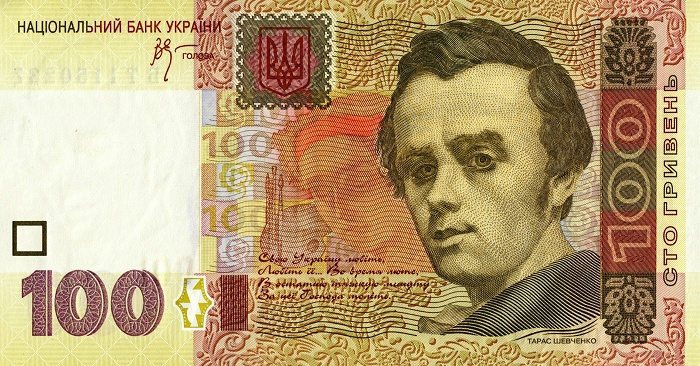
Though often overlooked, the impact of his visual art is increasingly appreciated today, sometimes even surpassing the recognition of his literary works in artistic circles. Most of his paintings are well-preserved, testifying to his unique artistic talent. His experimentation with photography and his pioneering role in the art of etching in the Russian Empire (for which he was awarded the title of Academician in 1860) underscore his multifaceted artistic contributions.
Shevchenko's enduring popularity is immense, and his image has become a powerful symbol of Ukrainian resistance. He inspired many protesters during the Euromaidan revolution. His poem "Testament" (Zapovit) resonated deeply with Ukraine's ongoing struggle during the 2022 Russian invasion of Ukraine, solidifying his role as a timeless symbol of national resilience. His image is featured on the 100 UAH banknote, reflecting his status as a national hero.
5.2. Criticisms and Controversies
While celebrated as a national hero, Shevchenko's works and actions also encountered criticism and controversy during his lifetime and in subsequent historical periods.
The most notable instance of official condemnation came from Tsar Nicholas I himself, who, upon reading Shevchenko's poem "Dream," initially found parts amusing but became enraged by the poet's satirical portrayal of the Tsarina. This direct criticism of the imperial family led to Shevchenko's harsh sentence of exile with a ban on writing and painting.
Literary criticism also emerged, such as Vissarion Belinsky's sharp critique of Shevchenko's epic poem Haidamaky in the magazine Otechestvennye Zapiski, where Belinsky dismissed it for its "inclination to romantic pompous ingenuity."
Shevchenko's evolving views on Polish-Ukrainian relations also presented a complex picture. While some of his earlier poems contained critiques of historical Polish attitudes towards Ukrainians, he later called for solidarity with Poles in their common fight against the Tsarist regime, demonstrating a maturing political perspective aimed at broader anti-imperial alliances.
During the Soviet era, Shevchenko's legacy was subject to manipulation. Soviet authorities sought to downplay or suppress the Ukrainian nationalist aspects of his poetry, instead emphasizing his portrayal of class struggle and his anti-imperialist sentiments. They presented him as an internationalist figure who opposed exploitation by the Empire, thereby minimizing his role as a progenitor of Ukrainian national identity, particularly his calls for independence. However, this interpretation has been widely overturned in modern Ukraine, where he is now firmly regarded as a crucial figure in the nation's self-determination, a view shared by the Ukrainian diaspora worldwide.
Some scholars have also considered certain prose works by Shevchenko (such as novels, his diary, and plays like "Nazar Stodolya" and "Nikita Gayday"), which were written in Russian, to be part of Russian literature. This perspective highlights the linguistic complexities of his creative output, given the dominant language of the Empire at the time.
5.3. Monuments and Commemorations
Taras Shevchenko is one of the most widely commemorated figures in Ukraine and among the Ukrainian diaspora. The first statue of Shevchenko was unveiled in Romny in October 1918. Many monuments to him were erected throughout the Soviet Union; for example, statues in Moscow (November 1918) and Petrograd (December 1918) were later rebuilt due to inferior initial materials. The monument in Saint Petersburg was remade in 2000.
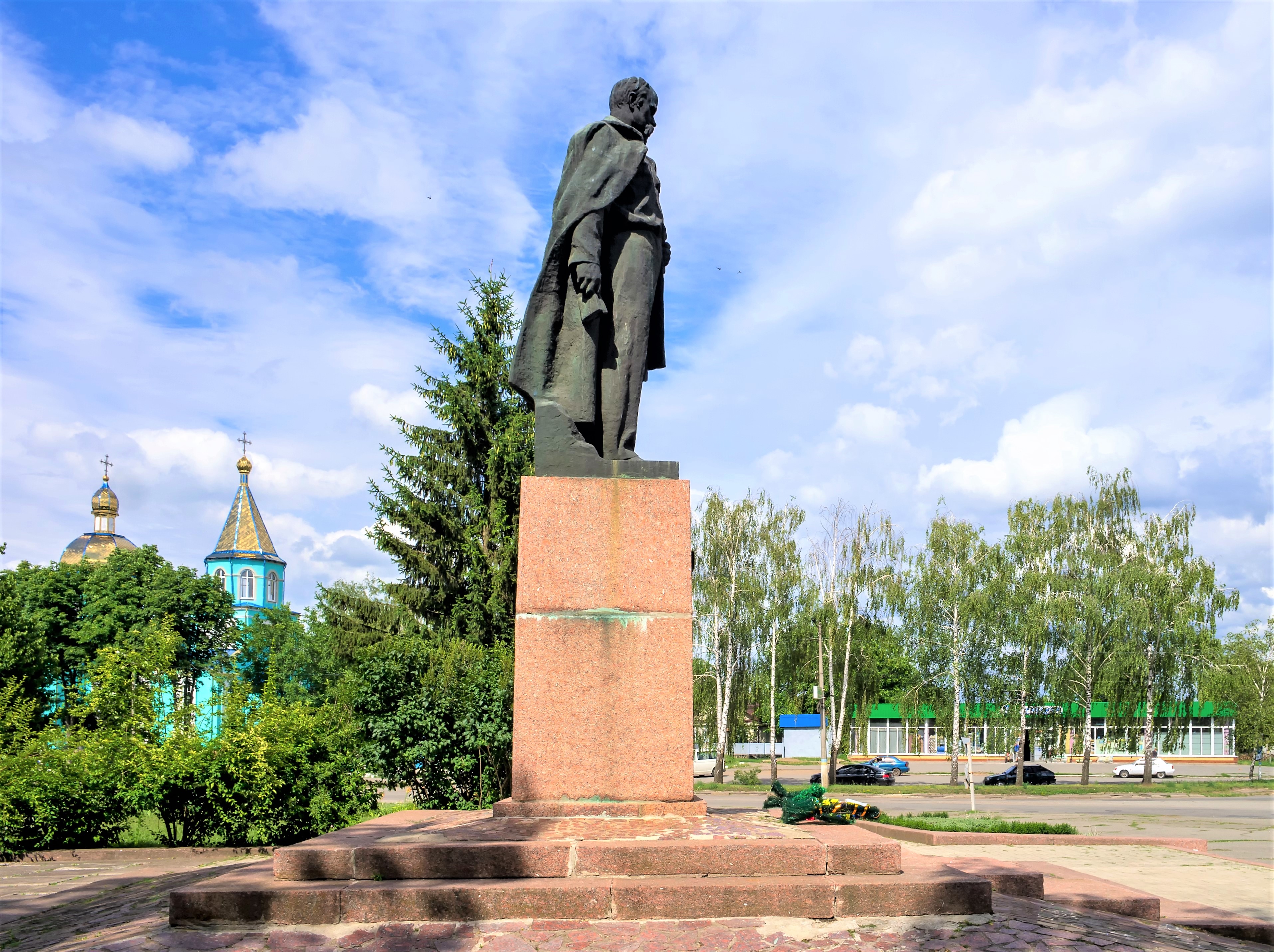
Numerous monuments to Shevchenko exist across Ukraine, including prominent memorials in Kaniv, in the center of Kyiv, and in cities like Kharkiv, Lviv, and Luhansk. Following Ukraine's independence from the Soviet Union, some statues of Vladimir Lenin were replaced by statues of Shevchenko, symbolizing a shift in national identity and historical reverence. Streets and squares have also been renamed in his honor, and a Kyiv Metro station is dedicated to him.
Beyond Ukraine, monuments to Shevchenko have been erected in many other countries, often at the initiative of local Ukrainian diaspora communities. These include the granite Taras Shevchenko Memorial in Washington, D.C., a monument in Rome, Italy (next to the Basilica of St. Sophia), and statues in the Brazilian cities of Curitiba and Prudentópolis. Other international commemorations include a monument in Zagreb, Croatia; a bust at Shevchenko School in Vita, Manitoba, Canada (unveiled in 1987); and another bust in the Østre Anlæg Park in Copenhagen (unveiled in 2010). There are also memorials in Soyuzivka, New York, Tipperary Hill in Syracuse, New York, a park named Taras Shevchenko in Elmira Heights, New York, and a street in East Village, Manhattan. Part of Connecticut Route 9 passing through New Britain is also named Shevchenko.
Other forms of commemoration include:
- In 1957, the Ukrainian-American composer Antin Rudnytsky wrote the cantata Poslaniie, based on Shevchenko's poem of the same name.
- From 1966 to 1968, artist Hanna Veres created a series of ornamental textiles dedicated to Shevchenko, which were used to illustrate the 1971 edition of Kobzar.
- Shevchenko also created and financed the publication of a grammar book for Ukrainian children, further solidifying his educational legacy.
6. Translations
The global reach of Taras Shevchenko's works reflects his universal appeal and the enduring power of his themes, making him a significant figure in world literature.
6.1. Korean Translations
In South Korea, Taras Shevchenko's poetry has been introduced through the translation of 77 poems by Kim Seok-won, published under the title Ah Ukraine! Dnipro!. This translation brought Shevchenko's powerful verses to Korean readers, contributing to a deeper understanding of Ukrainian literature and culture. It allowed for the appreciation of his advocacy for social justice and national liberation within a Korean literary context.
6.2. Translations into Other Languages
Shevchenko's works have transcended linguistic and national boundaries, with his poem "Testament" (Zapovit) alone translated into over 150 languages worldwide. This global recognition highlights the universal themes of freedom, dignity, and national self-determination present in his writing.
Early translations of his work into Vietnamese were primarily indirect. In 1959, the poet Tế Hanh translated two of Shevchenko's poems into Vietnamese via French. In 1961, to commemorate the 100th anniversary of his death, the Literature newspaper published several poems translated by Thúy Toàn and Nguyễn Xuân Sanh, primarily from Russian and French. While these early translations provided initial exposure, they were limited in quantity and sometimes lacked the full spiritual depth of the original Ukrainian.
A significant milestone occurred in 2004, on the 190th anniversary of Shevchenko's birth, when the Vietnam Writers' Association published Taras Shevchenko's Poetry, a collection of 36 poems directly translated from the original Ukrainian by Nguyễn Viết Thắng. This marked a crucial step towards more authentic translations. In 2012, the Vietnam Writers' Association re-published the collection, expanding it to include the 36 bilingual (Ukrainian-Vietnamese) poems in Part 1, and compiling all previous translations and excerpts of Shevchenko's poetry into Vietnamese since 1959 in Part 2. Currently, Nguyễn Viết Thắng is undertaking an ambitious project titled "Taras Shevchenko - 150 Poems and Epic Poems," having already translated over 100 works, including major collections like Kobzar and Poems Written in Prison, and renowned epic poems such as Kateryna and Haydamaky, into Vietnamese.